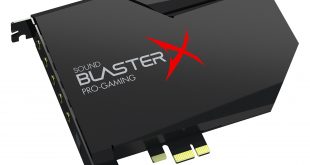The Asus Xonar Essence One arrives in a monolithic style box, predominately black with a gold logo in the center and plain text underneath. It is extremely heavy.
For those interested, the design of the box is based around the ‘Qing Tiger' a 4,000 year old Chinese symbol which represents the search of man for the ‘essence of sound'.
This journey sourced instruments that not only pay homage to the gods, but also represent the harmony between man and nature. The crystallisation of this knowledge became the Chime of the Tiger or “Qing”. So there you have it, the weird looking logo on the box actually means something.
The Asus Xonar Essence One is protected underneath a padded inner layer, and encased in a plastic protective cover. On either side of the main unit are two boxes which contain all the accessories.
The bundle contains software for Windows computers, USB cable, several power cables and a detailed user manual. Asus also include an audio precision test report which details how the specific unit has performed before shipping. It is very detailed and worth a scan, even if a lot of the information may seem overkill for many people. The report highlights reports on signal to noise ratio, Harmonic Distortion, Frequency response, Dynamic Range and Crosstalk. If the device doesn't pass the specifications required it goes back to the factory.
The unit itself is heavy, using premium aluminum for the outer shell. It is a quality design, as we would expect for this specific audience. Again, the housing has the image of the Qing Tiger, which is the same as the box.
On the front panel is a power button which is surrounded by a blue light when powered on. There is also an upsampling function via the ‘world's first 8x symmetrical upsampling'. There are also input, mute and volume controls on the front of the unit. There are two volume potentiometers, one for speakers and one for headphones and a series of LED lights which indicate the received bitrate by the DAC.
Sadly there is only an unbalanced headphone port on the front. I use balanced throughout my system as the soundstaging is greatly improved with the right source material.
The rear of the device can accept toslink, USB (asynchronous) and coaxial input with balanced (2×3 XLR) and unbalanced output connectors on the left. Be aware that ASUS only make a single universal unit, with a 115v/230v voltage switch, so be sure that it is set correctly before potentially destroying it!
I have to admit, I wasn't expecting such attention to detail inside the unit. There is a huge toroidal transformer which is a high grade unit. Asus are using quality capacitors throughout the design and we noticed that the op-amps are mounted on sockets meaning they can be removed and replaced. We are sure that ASUS won't support this directly, but it is nice to see them offering the hardcore enthusiast audiophile the option to fine tune this section for slightly different audio parameters.
The capacitors are not branded, so we would assume they are being custom made for ASUS, for this specific design. The Toroidal transformer is output: +5 V 0.9A, +12 V 0.7A,-12V 0.7A. There is a single PM06AVE3 -5.0P and a LM2940CT National SemiConductor Voltage Regulator. They are using another LM2990T – 12P and two JM13ABE3 National SemiConductor Voltage Regulators.
The Digital DSP is by Analog Devices, the ADSP-21 261 (150mhz SIMD SHARC Core, 900MLOPS). The USB controller is a C-Media CM6631, which is an asynchronous USB device supporting up to 24 bit/192khz.
I was pleased to see that ASUS haven't skimped on the S/PDIF, which is an AKM AK4113VF, one of the best AES/EBU implementations on the market. Asus are using 2x BurrBrown DAC's – the PCM1795, which is 32bit/192khz with a rating up to 123db SNR.
Analog Headphones are supported by two EM13ABE3 LME 49600 TS (National Semiconductor High Current Audio Buffer) and two JR06ABE3 LME 49720NA (National Semiconductor OPAMP)
If you are using speakers then they will be driven by three JR12ACe3 LM 4562NA (National SemiConductor OPAMP) and six 13AE08W 5532P (Texas Instruments OPAMP).
The Volume potentiometers are ALPS design, one of the best companies that ASUS could partner with. My friends Krell amplifier uses similar potentiometers.
 KitGuru KitGuru.net – Tech News | Hardware News | Hardware Reviews | IOS | Mobile | Gaming | Graphics Cards
KitGuru KitGuru.net – Tech News | Hardware News | Hardware Reviews | IOS | Mobile | Gaming | Graphics Cards

















